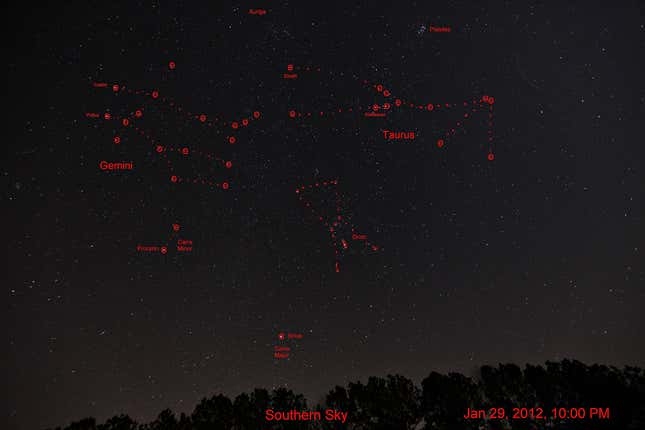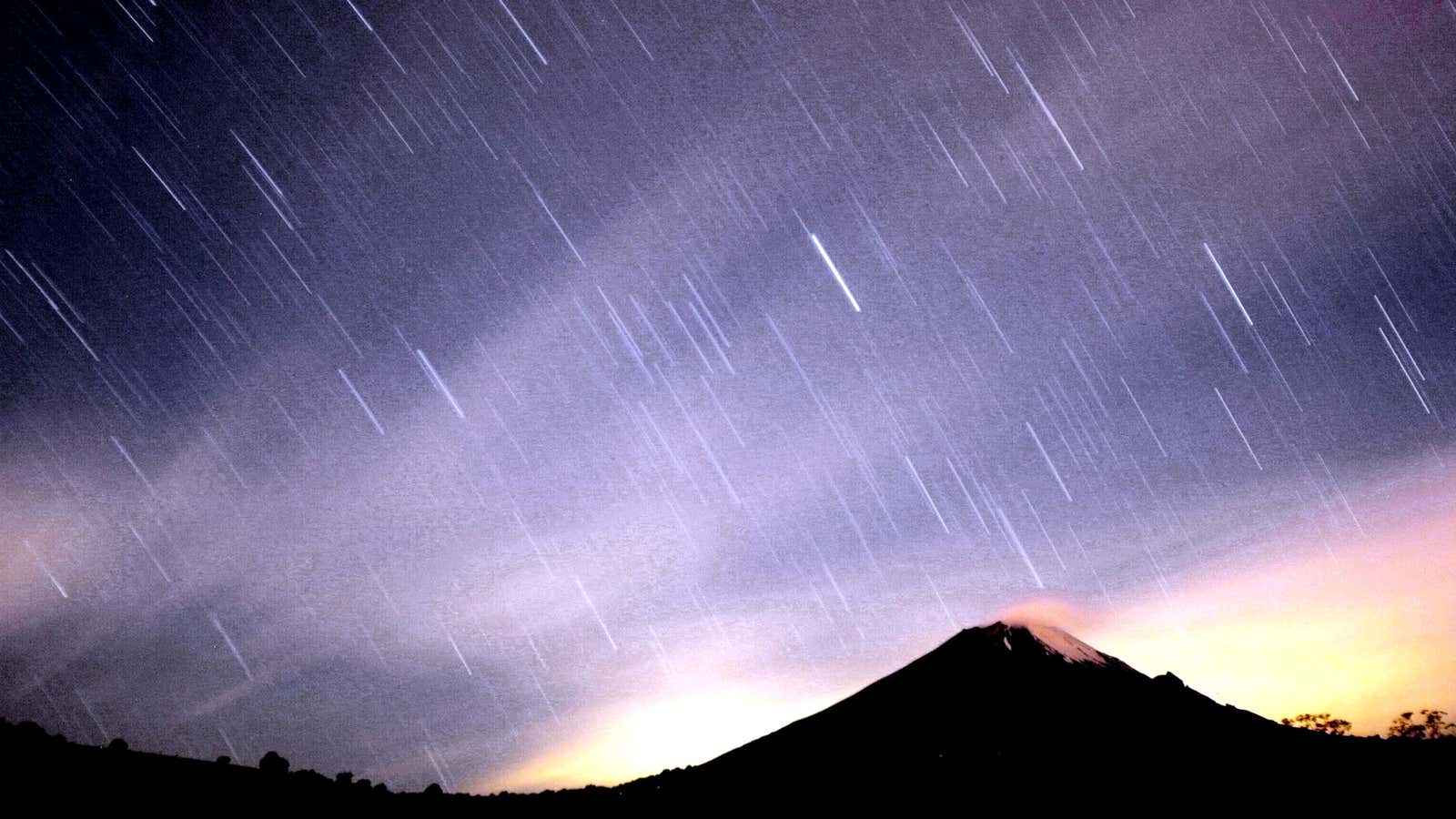The Geminid meteor shower began nearly 200 years ago, scientists speculate, when asteroid 3200 Phaethon collided with another object to produce a steady stream of particles. Every December, those particles burn up in our atmosphere as Earth’s orbit crosses the asteroid’s, lighting up the night sky and creating one of the world’s best meteor showers.
Since its first recorded observation in 1833 (from a riverboat on the Mississippi), the Geminid shower has only grown stronger, thanks to Jupiter’s gravity tugging the particle stream closer to Earth. This year, asteroid 3200 will also fly within 6.4 million miles of Earth, its closest distance since 1974. The asteroid won’t come this close again until 2093.
In areas with low light pollution in the northern hemisphere, the shower’s peak may bring as many as 120 meteors per hour streaking across the sky. In the southern hemisphere, you will have a subdued but still beautiful show because Gemini doesn’t rise very high above the local horizon.
What is a meteor shower?
When space rocks known as meteoroids—often no bigger than grains of sand—collide with Earth’s atmosphere, they burn up on their fall and create tails that look like bright streaks. These are what we call meteors; if they reach the ground, they’re called meteorites. (The Geminids won’t turn into meteorites because they’re too small to survive the descent.)
On a typical night, you might expect to see a handful of meteors per hour—anywhere from two to 16, according to the American Meteor Society, depending on the time of day and year. When Earth plows through a stream of meteoroids, creating a much higher rate of meteors, we call it a meteor shower.
Most meteor showers originate from comets, which produce lots of meteoroids that create a shower if they intersect with Earth’s orbit. The Geminid meteor shower is the only major recurring shower known to come from an asteroid instead of a comet.
When can I see the Geminid meteor shower?
The best time to enjoy the meteor shower this year is on the night of Dec. 13 and morning of Dec. 14. It will peak around 2am, when the sky is darkest.
Last year, the shower peaked at the same time as the supermoon, which washed out the fainter meteors. This year, a crescent moon will leave a relatively dark sky for the shower to populate with light.
How do I get the best view of the Geminid meteor shower?
Like the supermoon, you can watch the meteor shower sans special glasses or a telescope. If you’re in a cold area, dress warmly and grab a blanket to lie down (ideally somewhere far away from light pollution). It’ll take 20-30 minutes for your eyes to adjust to the dark.
As the shower’s name suggests, its meteors appear to originate from the Gemini constellation. You can find this by first identifying Orion with its three-star belt. Gemini is above and to the left, high in the northeastern sky. Rather than look directly at Gemini, which will limit your view to meteors that don’t travel far, look around the constellation to see meteors with longer tails.

If you can’t get away from light pollution, don’t worry: You’ll still be able to see meteors, just at a slower rate. Expect around 20 to 60 per hour.
The Geminids are one of the best showers each year because the meteors travel at slower speeds—around 20 miles a second—producing radiant long arcs that last at least a second or two before flaring out.
